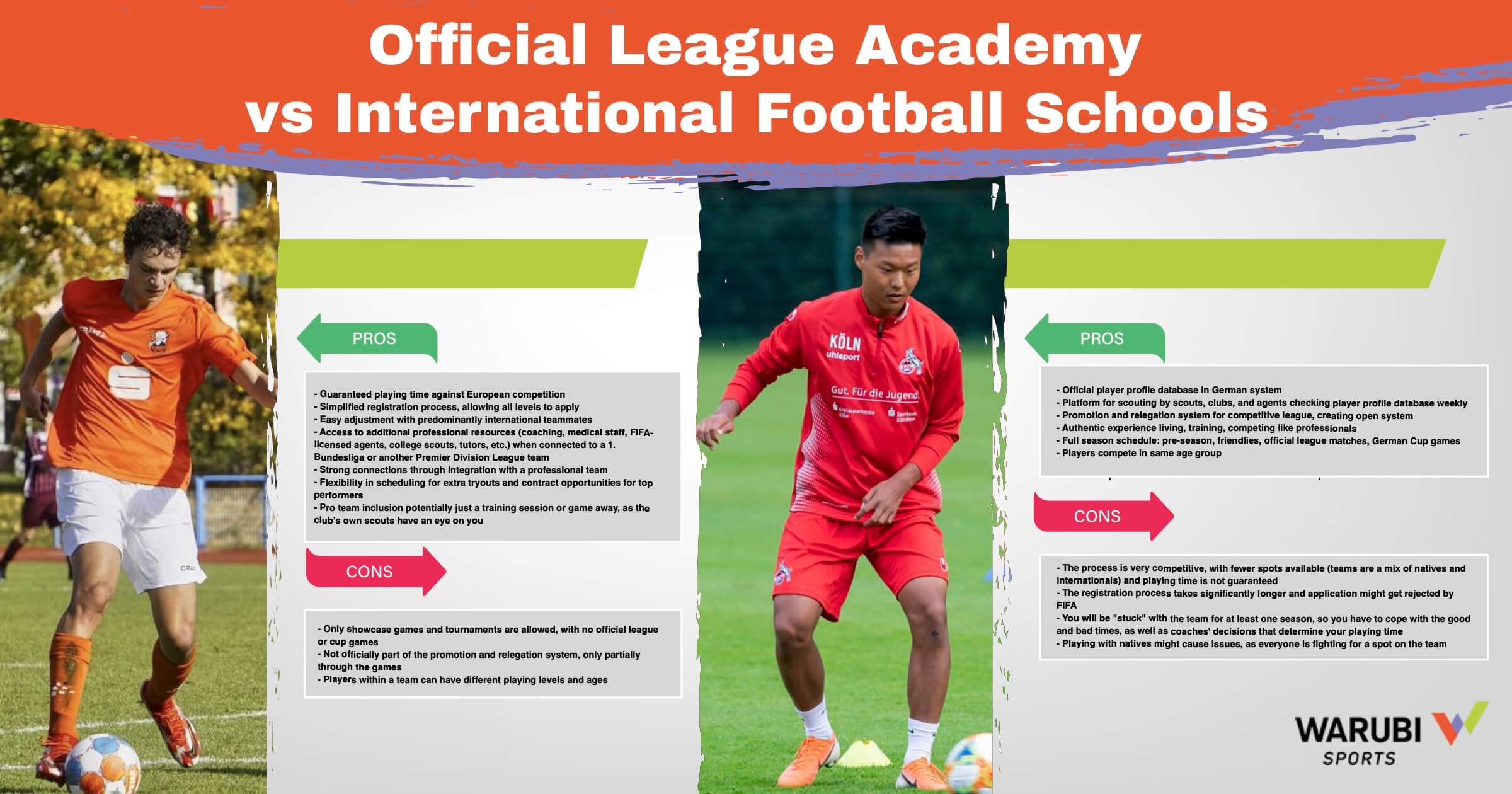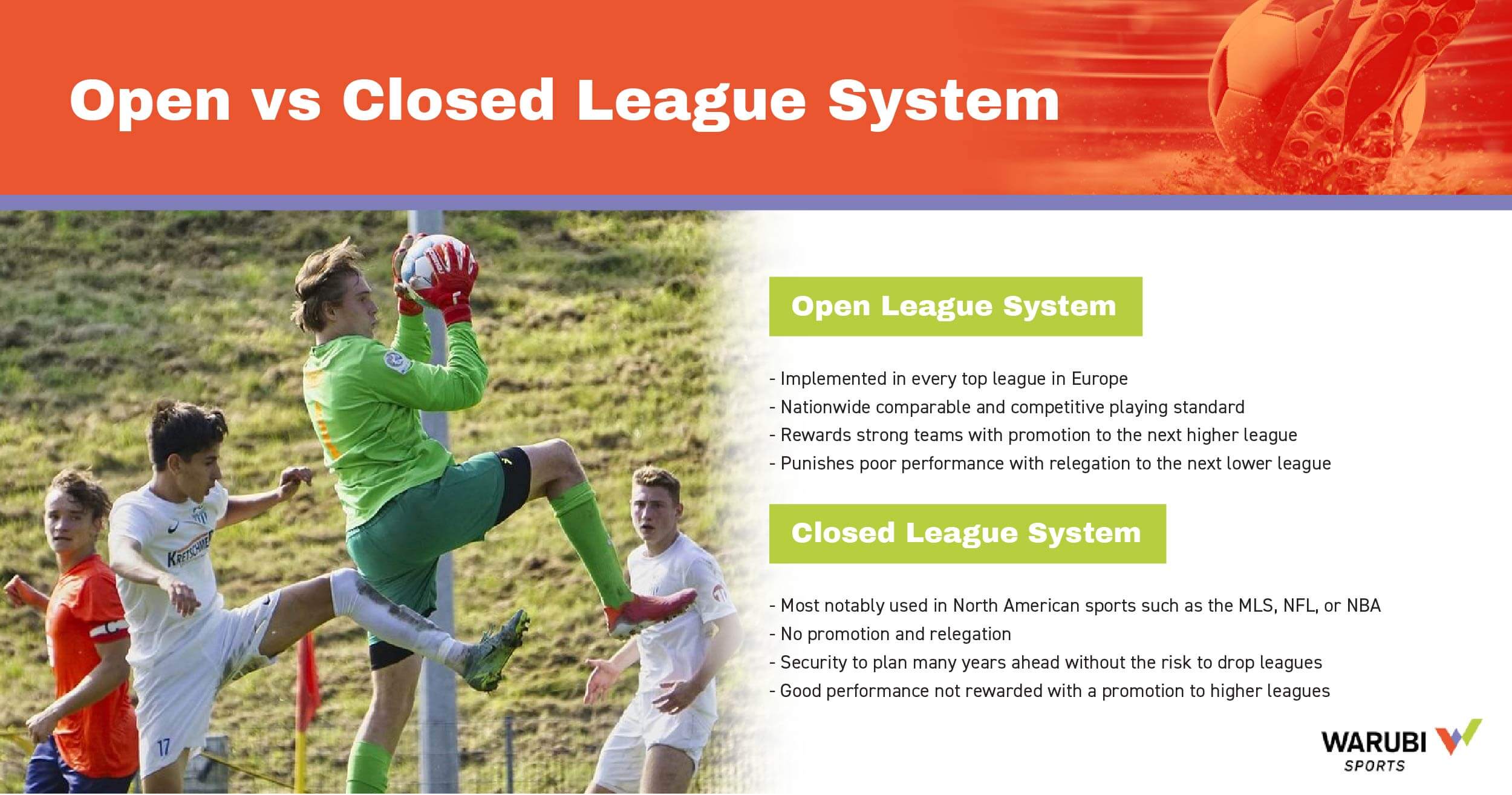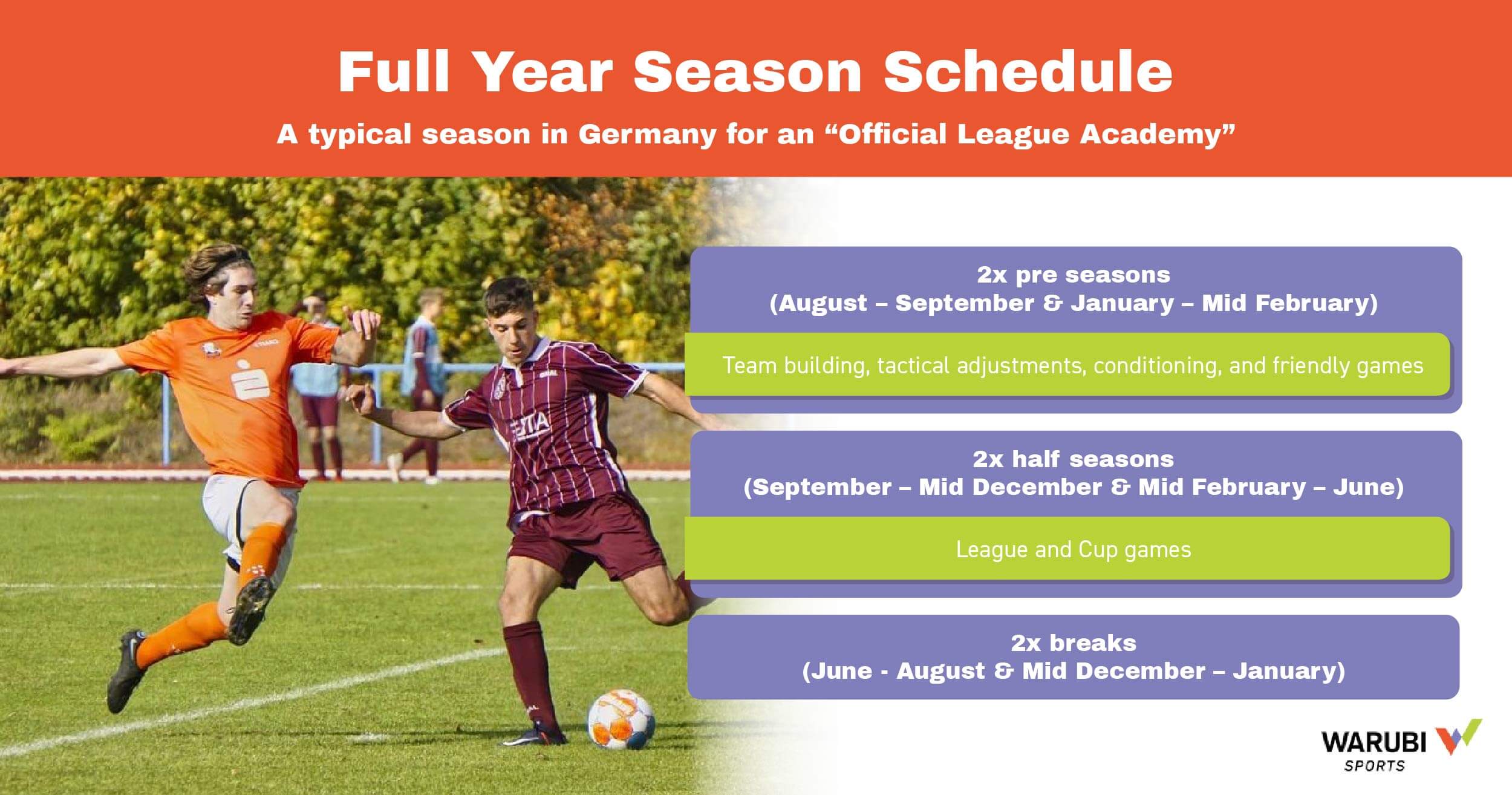Table of Content - German Soccer Academies: Top 3 Insider Tips for Success
Playing soccer in Europe is the dream of many players. Germany is one of the best places to chase that dream, with world-class coaching, a famous youth system, and constant competition.
But here’s the catch: most players and families don’t really understand how German academies work. Without the right preparation, a player might train hard every day but never get real game minutes, never get noticed by scouts, and never build the profile needed to move forward.
The good news: with the right pathway, players can maximize playing time, get in front of scouts, and build a strong profile that opens doors to college soccer or professional opportunities.
Here are the 3 most important things every family needs to understand before joining a German soccer academy.
International Football School vs. Official League Academy – Which One Fits You?
Because FIFA has strict rules for players without an EU passport, international transfers are only allowed in very limited cases. That’s why two main academy models exist:

International Football Schools
About 95% of international academies fall into this category. Some are connected to professional clubs – for example, the Bundesliga Club 1. FC Köln’s International Talent Program (ITP).
These programs differ from an Official League Academy because they usually do not compete directly in the German league system. Instead, they offer a competitive schedule with friendlies, tournaments, and in some cases even structured league-style play with tables and standings.
This gives players valuable match experience while the connection to a Bundesliga club adds credibility and opens doors to future college soccer spots or professional opportunities.
Example: 1. FC Köln ITP
International Football Schools – Pros and Cons
International Football Schools are often the best starting point for international players. They provide a clear pathway into European soccer without the heavy restrictions of official academies. Here’s what families should know:
Pros
✅ Guaranteed Game Time – Unlike some official academies where players might sit on the bench, you’ll play matches against European teams on a regular basis. Game time means real development and more chances to impress.
✅ Eligibility – Open to all nationalities. FIFA’s restrictions on non-EU players do not apply here, making transfers much easier and more predictable. Even better: playing at an International Football School does not affect NCAA or college soccer eligibility in the United States. Families can confidently pursue both European and American pathways at the same time.
✅ International Teammates – Most players come from abroad, so it’s easier to fit in, make friends, and adapt both on and off the field. Families often feel more comfortable knowing their child won’t be the only newcomer.
✅ Professional Resources – Access to experienced coaches, medical staff, FIFA agents, and even college scouts (if connected to a major club). These are the same support systems that top players rely on.
✅ Connections to Pro Clubs – Many International Schools are directly linked to professional teams. A strong performance could open the door to trial invitations or even future contracts.
✅ Flexible Schedule – The season is less rigid compared to official academies, which means more opportunities for tryouts, showcases, and contracts throughout the year.
✅ Scouts Are Watching – Training sessions, showcase games, and tournaments are regularly observed by scouts. A standout moment can be all it takes to get noticed.
Cons
❌ No Official League Games – International Football Schools do not play in Germany’s official league system. Instead, they focus on showcase matches, tournaments, and friendly games. Some programs may join unofficial European leagues for extra competition.
❌ Mixed Skill Levels – Because players come from all over the world, teams often have a mix of ages and abilities. This can sometimes mean uneven competition, though it also helps players learn to adapt quickly against different styles.
❌ Higher Tuition and Fees – Families should be prepared for a bigger investment, often €25,000-75,000 per year. However, this includes training, resources, exposure, and professional connections that would be hard to access otherwise.
Official League Academies
Some players may also get recruited into an Official League Academy. These academies are part of the official German league system and provide the most authentic pathway into competitive German football. However, this model also comes with serious challenges that families must consider beforehand.
Example: Borea Dresden
Official League Academies – Pros and Cons
Official League Academies are the most prestigious pathway in German youth soccer. They place players directly inside the official league system, offering the most authentic experience and highest level of competition. However, they also come with strict rules, limited opportunities, and intense pressure. Here’s what families should know:
Pros
✅ Player Profile – Every match and statistic is officially recorded in the German football system. Scouts, clubs, and agents review these profiles weekly, so your performances are tracked and visible.
✅ Competitive League Play – With promotion and relegation, the competition is always intense. Players quickly learn what it means to play under pressure.
✅ Authentic Experience – Players live and train just like German youth academy players, following the same daily structure and expectations.
✅ Full Season Schedule – Includes pre-season training, friendlies, official league matches, and national or regional cup games.
✅ Age-Group Teams – Players compete against others their same age, ensuring a structured development pathway.
Cons
❌ Extremely Competitive – There are very few spots, and both local and international players fight for them. Even talented players may not see much playing time.
❌ Complicated Registration – FIFA regulations for non-EU players make the process slow and unpredictable. Applications can be delayed or even rejected.
❌ Full Commitment – Once signed, you commit for the entire season. This requires serious discipline and resilience, especially if playing time is limited.
❌ High Internal Competition – Local players are hungry to protect their spots. International players must prove themselves every day in training just to stay in contention.
Open vs. Closed League System

Germany’s soccer leagues are among the best in the world. For players attending a German academy, it’s a chance to test your skills against top-level competition and prepare for a professional or college career.
Germany uses an Open League System, just like most top European leagues including the Bundesliga. This means:
- Strong performances are rewarded with promotion to higher leagues.
- Weak performances are punished with relegation to lower divisions.
- Every game matters, creating a competitive environment nationwide.
In contrast, many North American sports like the MLS, NFL, and NBA follow a Closed League System.
- Teams cannot be promoted or relegated.
- The advantage is long-term stability, as teams don’t risk dropping out due to poor performance.
- The downside is limited upward mobility – new teams cannot earn a place through results alone.
Why this matters: In Germany’s open system, players are tested constantly. This pressure builds resilience, but it also ensures that talent and performance drive opportunities, not just politics or business.
Soccer Season in Germany

The season at an Official League Academy typically runs from August to June with a short winter break:
- 2 Pre-Seasons: August-September & January-mid February
- 2 Half-Seasons: September-mid December & mid February-June
- 2 Breaks: June-August & mid December-January
- The first pre-season (Sommervorbereitung) starts in August, focusing on team building, fitness, and friendly matches.
- The first half of the season (Hinrunde) runs September to December with league and cup games.
- A winter break (Winterpause) follows from mid-December to mid-January.
- The second pre-season (Wintervorbereitung) begins in January with conditioning, tactics, and friendlies.
- The second half of the season (Rückrunde) runs mid-February to May or June, depending on the league.
By contrast, International Football Schools follow a more flexible schedule.
- Matches are often arranged as friendlies, showcases, or tournaments.
- Schedules can adapt quickly to trial opportunities or club invitations.
- This flexibility is an advantage for international players who want to maximize exposure while adjusting to European football.
Conclusion - Should I Join a German Soccer Academy?
Attending a German soccer academy is not for everyone.
It requires significant time, and in most cases, financial investment, in addition to daily resilience and full commitment.
Players and families should be ready for long seasons, intense competition, and the emotional challenge of adapting to a new culture.
For players who are ambitious, motivated, and willing to put in the effort to see how high their potential is, the rewards are immense:
- Top coaching standards and facilities.
- High-level competition every week.
- Exposure to scouts and agents.
- U.S. college coaches value German academy experience, often leading to stronger scholarship offers and better placements.
Bottom line: A German academy can transform a player’s future. For many internationals, starting at an International Football School provides the perfect entry point – with guaranteed playing time, flexibility, and pro club connections. From there, players can progress into official league academies or even move straight into professional opportunities.
Frequently Asked Questions (FAQ)
Do international players actually get game time in Germany?
Yes. At International Football Schools, guaranteed playing time is part of the model. Unlike Official League Academies, where internationals often sit on the bench, you will play regularly in matches, showcases, and tournaments.
How do German academies affect U.S. college eligibility?
Playing at an International Football School in Germany does not affect NCAA or U.S. college eligibility. U.S. coaches value German academy experience because it proves players can handle intense training, weekly competition, and life abroad.
What is the biggest difference between International Football Schools and Official League Academies?
International Schools provide flexibility, exposure, and guaranteed minutes. Official Academies are more authentic but come with limited spots for non-EU players and tougher competition. Many internationals start with an International School before moving into an Official Academy.
How much does it cost, and is it worth it?
Families should expect an investment of €25,000-€75,000 per year. While significant, this covers coaching, competition, resources, and exposure that open both professional and U.S. college opportunities.
How is Germany’s Open League System different from the U.S.?
Germany uses an open league system where teams can be promoted or relegated based on results. This creates constant competition and pressure, helping players build resilience and prepare for both professional soccer and U.S. college demands.
What does the German soccer season look like?
The season runs from August to June, with short breaks in December-January and June-August. Players experience two pre-seasons and two competitive halves each year, meaning near year-round development.
What if my child struggles to adapt to life in Germany?
Adjusting can be tough, but International Schools are designed to help. Players live with internationals, receive daily support, and are guided by staff experienced in helping them adapt both on and off the field.
Additional Resources
Soccer academies in Europe are looking for talented international players for a variety of reasons. One reason is to tap into a global pool of talent. These academies recognize that soccer is a global sport and that there are talented players from all over the world. By recruiting international players, they have the opportunity to bring in players who may not have been discovered or developed in their own country. This can help the academy build a more diverse and talented team.
Learn how to get scouted in Europe with this informative interview featuring a football agent from a big European agency. In this video, he provides valuable tips and advice for aspiring players, emphasizing the importance of research, patience, and realistic expectations.
The path to becoming a better player isn’t a straightforward one. Today, we’re going to dive into one player’s journey, who has pretty much seen it all, from the German Bundesliga academy with teams like Borussia Dortmund to the NCAA D1 powerhouse, Louisville, to the MLS draft, to Toronto FC. Then he transitioned into coaching at the top university, North Carolina Tar Heels, and pursuing a PhD at Premier League Top Club, Chelsea London. Let’s explore how this journey could potentially inspire and guide you.
When our player Morris Duggan first arrived at his chosen college in the USA after playing several years in the German youth academy system, he had no idea what kind of emotional rollercoaster he was in for!




